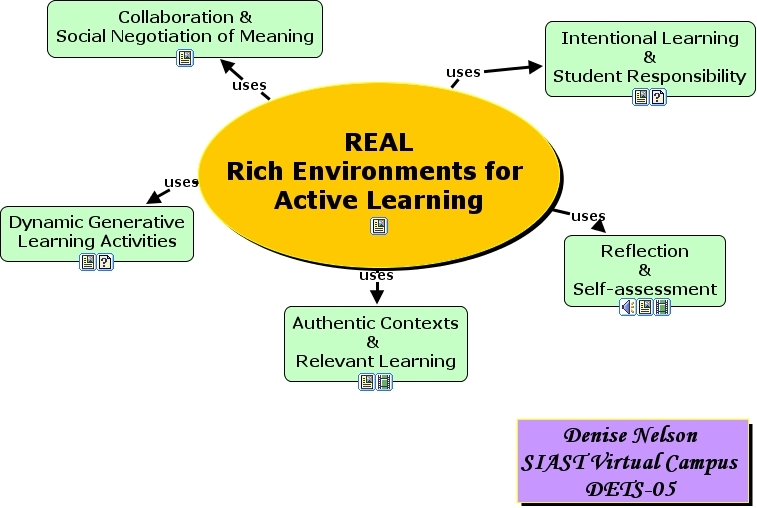e-Learning Ecologies MOOC’s Updates
REALS and CLEs: Learning environments that foster active construction
REALs and CLE: Rich Environments for Active Learning and Contructivist Learning Environments
Individuals, whether employees, employers, teachers or students need to be flexible problem solvers. This involves not just the ability to find the information that is needed but to be able to apply it to solve a problem. The ability to transfer knowledge and experience to new situations is a part of active knowledge. How do you use the information that you have found to address a question that you are trying to answer? And how do you teach in a way that fosters this type of transfer?
REALs (rich environments for active learning) are by no means a new concept, but are definitely worth revisiting as education moves more fully into an e-environment. According to Wilson (1996) REALS are “comprehensive instructional systems” that focus on encouraging students to be a part of a community of learners (students and instructors) that contribute to and are essential part of the decision-making process and learning design (see fig below). This type of instruction promotes exploration and study within a context and includes activities that focus on development of higher level thinking (problem solving, experimental design, interactive discussion and creativity). Reflection on the learning and the tools and methods used in the process are also an integral component of REALs. There is learning to be gained from the process of learning itself.
http://skat.ihmc.us/rid=1116658509352_868422751_7175/Real%20Multimedia.cmap
There is a certain amount of overlap between REALS and Constructive Learning Environments (CLEs) but let’s outline CLEs separately. CLE are technology based learning spaces in which students are encouraged to explore, experiment, construct and reflect on their learning experiences. A well-designed CLE should have pedagogical, social and of course technological components (Wang, 2007). Knowledge construction is set in a framework of learning objectives for the course or study but has flexibility and resources that can support the various needs and goals of the different learners. This need for different tools also is a key part of the social component of the CLE. Providing a variety of communication tools can help to increase participation of the members of the learning community. For example, an online discussion can be set up for asynchronous interactions allowing individuals to edit their thoughts before posting (and even afterword sometimes) and it can even be set up to be anonymous to the individuals participating potentially removing a hurdle for some individuals. Combined with a chat room or video conferencing, a wider range of ways that individuals can contribute to the knowledge can be achieved. The last component of a CLE is the technology. Ultimately this should be well integrated with both the pedagogy and the social components of the course, enhancing the active and social knowledge construction.
Both CLEs and REALs focus on the active participation in the construction of knowledge. They link that construction with the pedagogy (what the learning objectives are), the tools and resources that are used, and the social interactions that aid in the knowledge construction. I think one of the most overlooked components to learning is the reflection on the process of knowledge construction. It is important to think about how the knowledge was constructed as this can provide a framework for further learning.



Dee - Great update on REALs and CLEs. I was not familiar with either acronym and chose your post for that reason. I was not disappointed.
Your explanation of the three components of REALs and CLEs (pedagogy, social, and technology) was easy to follow and I appreciated the examples that were embedded in the text as well as the graphic.
Thanks for teaching me something new.